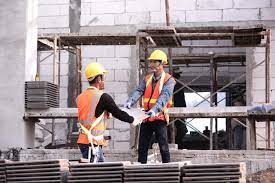The construction industry has always been a cornerstone of economic brick tuckpointing and infrastructural development. However, it is currently undergoing a transformative phase driven by innovative technologies and methodologies. These advancements are not only enhancing the efficiency and sustainability of construction projects but are also redefining the possibilities within the industry. This article explores some of the most significant innovations shaping modern construction.
1. Building Information Modeling (BIM)
Building Information Modeling (BIM) is revolutionizing the way construction projects are planned, designed, and managed. BIM involves creating and using a digital model to represent the physical and functional characteristics of a facility. This technology enables architects, engineers, and construction professionals to collaborate more effectively, reducing errors and improving project outcomes. By integrating data into a single model, BIM helps in visualizing the entire project lifecycle, from inception to demolition.
2. 3D Printing
3D printing, or additive manufacturing, is making waves in the construction industry. This technology allows for the creation of complex structures and components directly from digital models, significantly reducing waste and labor costs. Companies are now capable of printing entire buildings or components such as walls, floors, and even bridges. 3D printing offers unprecedented flexibility and speed, making it ideal for both rapid prototyping and the production of custom components.
3. Drones and Robotics
The use of drones and robotics in construction is another major innovation. Drones are employed for site surveys, inspections, and monitoring progress, providing real-time data and high-resolution images. This information is crucial for making informed decisions and ensuring safety on construction sites. Robotics, on the other hand, is being used for tasks such as bricklaying, concrete dispensing, and welding. These robots increase precision, reduce human error, and enhance productivity.
4. Sustainable Construction Practices
Sustainability is becoming a central focus in modern construction. Innovations such as green building materials, energy-efficient designs, and waste reduction techniques are being widely adopted. Materials like cross-laminated timber (CLT) and recycled steel are gaining popularity for their reduced environmental impact. Additionally, buildings are being designed to maximize natural light and ventilation, incorporate renewable energy sources, and utilize smart systems to monitor and optimize energy use.
5. Modular Construction
Modular construction involves assembling building components off-site in a factory setting before transporting them to the construction site for final assembly. This method offers several advantages, including faster project completion, reduced site disruption, and improved quality control. Modular construction is particularly useful for repetitive structures such as hotels, residential buildings, and schools. It also allows for greater flexibility in design and easier integration of future modifications.
6. Artificial Intelligence (AI) and Machine Learning
AI and machine learning are increasingly being integrated into construction processes to enhance decision-making and efficiency. AI algorithms can analyze vast amounts of data from past projects to predict potential issues and optimize project schedules. Machine learning models help in improving design accuracy, estimating costs, and managing risks. These technologies are also being used to develop smart construction management systems that provide real-time insights and automate routine tasks.
7. Augmented Reality (AR) and Virtual Reality (VR)
AR and VR technologies are providing new ways to visualize and interact with construction projects. VR can create immersive simulations of buildings, allowing stakeholders to experience a project before construction begins. This helps in identifying design flaws and making necessary adjustments early in the process. AR, on the other hand, overlays digital information onto the physical world, assisting workers in understanding complex instructions and ensuring precise implementation.
Conclusion
The construction industry is embracing a wave of technological advancements that promise to transform how projects are conceived, designed, and executed. From the digital precision of BIM and 3D printing to the efficiency of drones, robotics, and modular construction, these innovations are driving the industry towards a more efficient, sustainable, and resilient future. As these technologies continue to evolve, they will undoubtedly unlock new possibilities and set new standards in the realm of construction.

